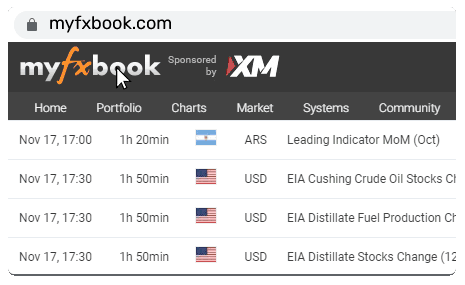The Saudi Squeeze Brings Energy Back Into the FX Mix

If the beleaguered euro and yen did not have enough to worry about already, they now must cope with Brent oil trading above $90/bl as the Saudis extend their supply cuts through to year-end. EUR/JPY, however, could start to turn lower based on positioning.
USD: ISM services the only threat to an otherwise bullish story.
The relentless ascent of the US dollar persists, with the DXY index reaching its highest levels since March. This surge was fuelled by a renewed uptick in US yields. While the substantial influx of investment-grade corporate issuance in the US, the busiest in three years, has been putting pressure on US treasuries, the foreign exchange market has also been influenced by soaring energy prices.
This week, the Saudis have confirmed their intention to extend their daily supply cut of 1 million barrels into December, thereby maintaining tight conditions in the crude energy markets. As a result, Brent crude oil is now trading above $90 per barrel. For the FX markets, this development serves as an unwelcome reminder of last summer's spike in energy prices, which adversely affected energy-importing currencies in Europe and Asia.
The United States' energy independence and status as a net exporter position the dollar favourably in the face of rising energy costs. In the near term, it appears that the primary threat to the dollar would be a substantial re-evaluation of growth prospects. While a significant drop in this index had previously weighed on the dollar at the end of last year, yesterday release shows an unexpectedly low reading below 54.5, with that I can anticipate the dollar to maintain its recent gains and consolidate at these elevated levels until the release of the US August Consumer Price Index (CPI) next week.
Regarding the major G3 currencies, we may witness some recalibration. Speculators appear to be maintaining long positions in the euro, while maintaining notably short positions against the yen in carry trades. The potential for further upside in USD/JPY now seems constrained, as Tokyo's rhetoric suggests the possibility of imminent intervention. Positioning indicators hint at increased vulnerability in EUR/USD support levels. EUR/JPY may face difficulties surpassing the 158.50 range and could potentially undergo a correction toward the 155 area.
EUR: EUR/USD looks vulnerable.
The term 'stagflation' is increasingly being used to characterize the Eurozone economy. This poses bearish implications for the euro, given its sensitivity to economic growth. Stagflation was a significant factor that weighed on the euro when it was introduced in 1999. Adding to this concern is the recent surge in energy prices driven by supply issues, which rekindles worries reminiscent of last summer's negative impact on the euro's terms of trade. In practical terms, this translated into the Eurozone's traditional trade surpluses turning into deficits, leading to a depreciation of the euro. While the impact on the euro may not be as severe as last year due to relatively stable natural gas prices, it is still unwelcome.
Looking at the European Central Bank (ECB) policy, the market currently assigns just a 25% probability of a 25-basis point rate hike next week. However, some believe the likelihood of a rate hike is much higher. Nevertheless, speculative positioning and the ongoing energy-related concerns leave EUR/USD in a precarious position. It wouldn't be surprising to see EUR/USD breach support around the 1.0700 level and potentially move down to the 1.0635/40 range.
In other developments in Europe today, Poland is expected to initiate an easing cycle. This move appears to have been well-communicated in advance and may not exert significant downward pressure on the zloty. However, the combination of the softer EUR/USD narrative and higher oil prices could continue to weigh on the zloty in the short term.
CAD: An unsurprising pause by the Bank of Canada today.
USD/CAD reached its highest level since March yesterday, briefly surpassing the 1.3660 mark from April. This uptick was driven by another round of USD strength and a general weakness in pro-cyclical currencies. However, it's unlikely that yesterday's Bank of Canada meeting will mark a significant turning point for the Canadian dollar. Policymakers are expected to consider recent weaknesses in economic growth and a cooling labour market, likely opting for a pause in their policy approach.
Market expectations have already priced in this dovish shift, and no major changes are expected further ahead. There's only a modest 9 basis points left in the CAD OIS (Overnight Index Swap) curve for the remainder of the year. This suggests that the downside risks for the Canadian dollar resulting from today's pause should be limited. Additionally, the Bank of Canada is likely to avoid completely shutting the door on the possibility of further tightening.
The recent rise in USD/CAD over the past month hasn't been accompanied by a similar divergence in short-term fundamentals. Currently, my short-term fair value model indicates that the pair is overvalued by 2.5%. While a shift in US economic data will likely be necessary to trigger a correction in the USD and close this mis-valuation gap, we anticipate that further gains in USD/CAD will become increasingly unsustainable. As such, we favour a retracement towards the 1.3460 level, which corresponds to the 200-day moving average, as our preferred bias for September.
This content may have been written by a third party. ACY makes no representation or warranty and assumes no liability as to the accuracy or completeness of the information provided, nor any loss arising from any investment based on a recommendation, forecast or other information supplied by any third-party. This content is information only, and does not constitute financial, investment or other advice on which you can rely.



















